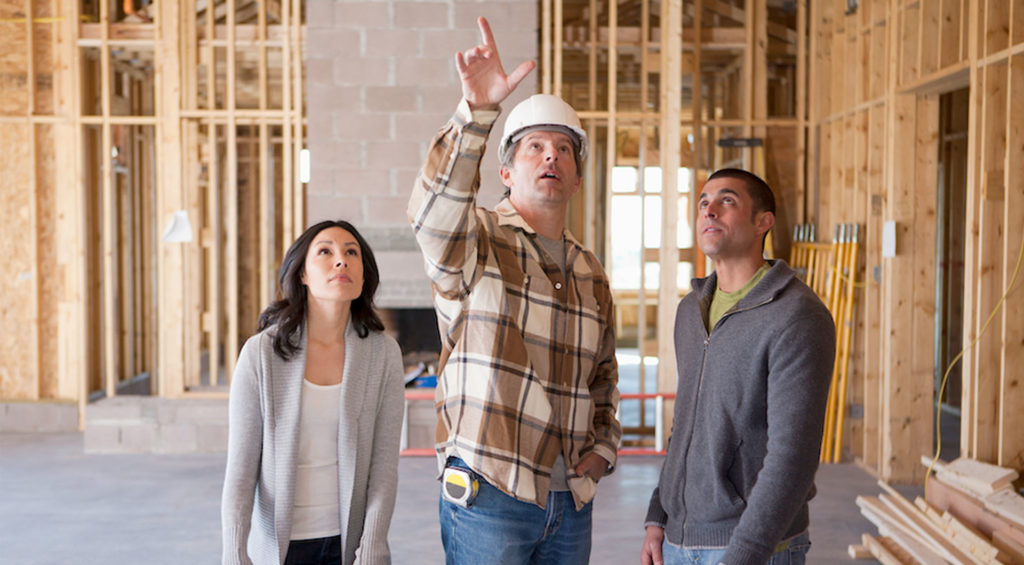22 Jan How to Buy a New Home
Buying new construction differs a great deal from purchasing a home with a prior occupant.
Do you love the smell of new cars? Then chances are you might really love the smell (and adventure) that comes with buying a brand new home as well. If the idea of having a say and input over what happens during the construction of your home excites you as much as the idea of being the first person to set foot in the home and take up residence, there is an industry waiting to cater to your desires.
But nothing is a guarantee. One of the first things you will need to do when buying a new construction home is to be realistic about what your budget is and where you want to live.
Is New Construction Right for You?
It is important to consider your readiness for what is known as the “cookie cutter” effect. Most of us like to stand out for one reason or another. But many new construction projects contain that homes are built to either resemble (or to even be identical to) one another. If that isn’t an issue for you, carry on, but if it is an issue, pump the breaks. You might not want your neighbors knowing your layout and comparing notes about your homes’ similarities and differences.
Two more big practicalities to mull over when buying new construction are convenience and distance. New construction often takes place in locations that are far from the nearest town centers and cities. This will no doubt add to a commute if you have one. And, in addition, the nearest school, playground, and supermarket are worth scoping out and mapping.
If you love the development, but it’s in a food desert where even Domino’s won’t deliver, that is worth consideration. Because new constructions are often half or newly complete, another potentially thorny situation you will have to contend with is the lack of adult trees and plants, and in some cases, the lack of a lush green lawn.
Steps to Buying a New Construction Home
1. Research new home builders.
Before you get too fond of anything, it is vital that you research the builder’s reputation. The best way to do this: take a look at other projects the builder has done and talk to the residents there. It will also be a great way for you to size up the homes and sneak a peek at what your future development could look like once it is completed. Beyond that, however, it is a good idea to look for anything on public record about the builder, including lawsuits. Check social media and local listservs to see if anything suspicious comes up, and remember that a fast search with the Better Business Bureau could turn up invaluable information.
2. Build your own team.
Most builders will have their own team, which means they have their own preferred real estate agents and mortgage brokers, or lenders. While having a conversation with their preferred real estate and mortgage representatives is a courteous gesture, it is always important to bear in mind at all times that they are working for the builder, and not for you.
This means they will work to get the best deal for the developer (and for themselves) without considering your situation.
The builder’s sales agent often works for less than commission and receives a salary and incentives to sell quickly, thus, turnover is a very important part of their livelihood. The builder’s lender is also a potential pitfall for similar reasons and might not give you the best deal. The best way to remedy this: hear them out, don’t sign anything and then hire your own team so that everyone can work together. Another pro tip is to shop around for your team and get one or two opinions and quotes, especially when it comes to your mortgage.
3. Know your customization options.
There are typically three options for buying a newly-constructed home: you can buy “on spec,” meaning the home is completed; you can buy a semi-custom home, which is completed for the most part but has customizable amenities, or you can opt to go the fully custom route, where you have a say in everything from the ground up.
In order to protect yourself from unforeseen expenses, it is important to ask the builder what comes standard with the purchase of the home and what will cost you extra when you are buying new construction. Once you get a verbalized list, make sure to also get it in writing. A model home with the works is sure to dazzle you but bring you back to earth if you discover that your budget excludes the hardwood floors, granite countertops and high ceilings you thought came with the home. A clear picture at the outset of what you are buying will thwart any confusion.
4. Get a home inspection.
Inspections are typically done by a general contractor or home inspector. Once they sign on to do the home inspection, they will look over the construction from top to bottom, checking all of its major systems. This includes the roof, plumbing, heating and electrical systems. In addition, the inspection will include a test of the foundation and assessment of whether or not there are unaccounted for slopes in amenities like a patio, and to ensure the roof drainage system is up to the task. Inspections can take up to three hours and typically cost anywhere from $200-$500 on average. Cost is also impacted by the home’s location, size, age, and type.
5. Understand your warranty options.
Warranties are also something you will want to ensure you have a clear picture about before you sign on the dotted line. One common misconception is that the home is completely covered by the warranty, so if anything goes wrong, you can simply get it fixed or replaced courtesy of the warranty. In fact, warranties offer limited coverage of the work and materials. Materials could include the home’s HVAC system, plumbing, and electric.
Warranties usually cover these items anywhere from one to ten years. To be sure about what is covered and what isn’t, get the specifics alongside the definitions of limitations and damages in writing. If you want to take it a step further, get the builder’s warranty to cover defects in craftsmanship and get a warranty that is backed by insurance.
6. Closing time.
Once you are satisfied with the final construction and it passes inspection, closing on the home is the next proper step. The dream team you have assembled prior to this moment will come in handy once again. You will need to call on your attorney, lender, and broker to come to the table with you and go over the specifics of your agreement. You are also well advised to have your inspector go over the property one final time before closing to make sure anything that needed attention or service was handled.
Anything that wasn’t taken care of will need to be addressed, and you will want to make sure the documents and numbers line up with your understanding of the agreement. Finally, you can take a deep breath and shop for movers. Your new home awaits.

